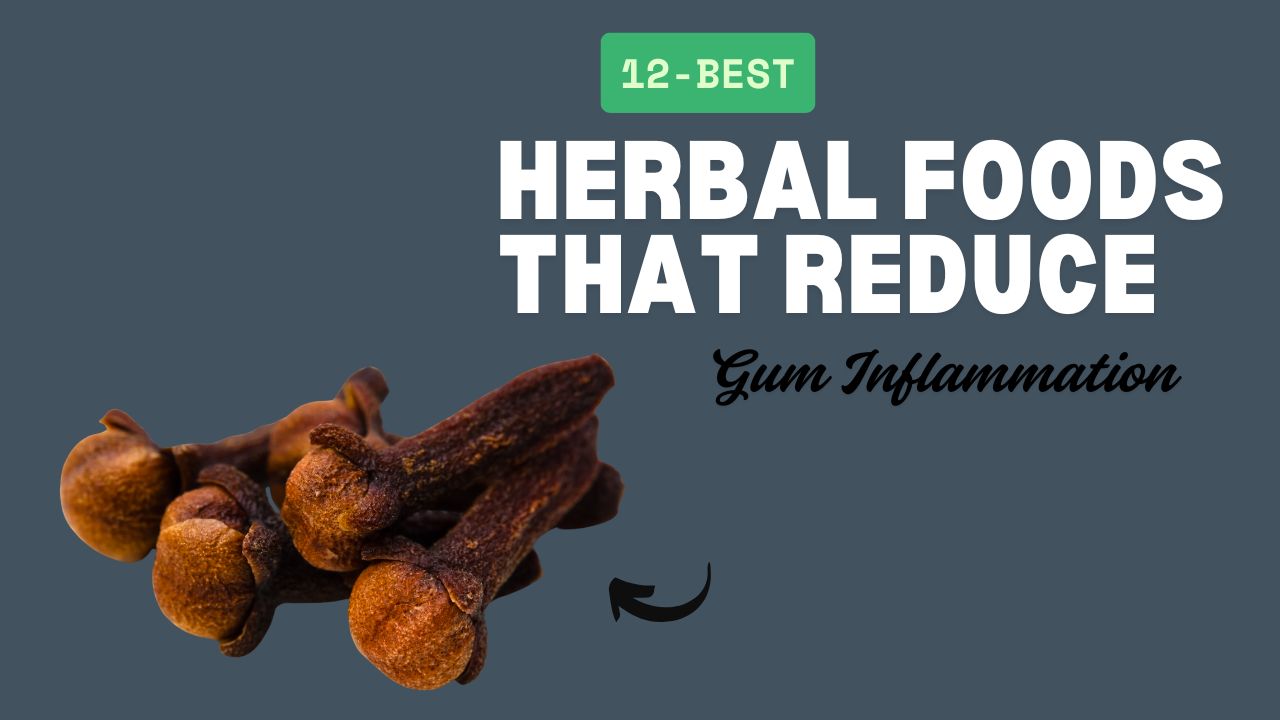Think bench press is the only way to grow your chest? Think again.
If you’re relying solely on barbell workouts, you’re missing out on one of the most versatile, muscle-building tools in your arsenal—dumbbells.
Whether you train at home or at the gym, dumbbell chest workouts not only build size but sculpt your chest with better balance, symmetry, and control. Plus, they engage stabilizing muscles that barbells often ignore. The result? A fuller, more defined chest in less time.
Did you know? Dumbbell exercises activate 20–30% more stabilizer muscle fibers than machine or barbell variations. That means more growth—faster.
Let’s dive into the 13 dumbbell chest workouts that will help you build a bigger, more defined chest fast. Each includes instructions on how to perform the exercise and the specific part of the chest it targets.
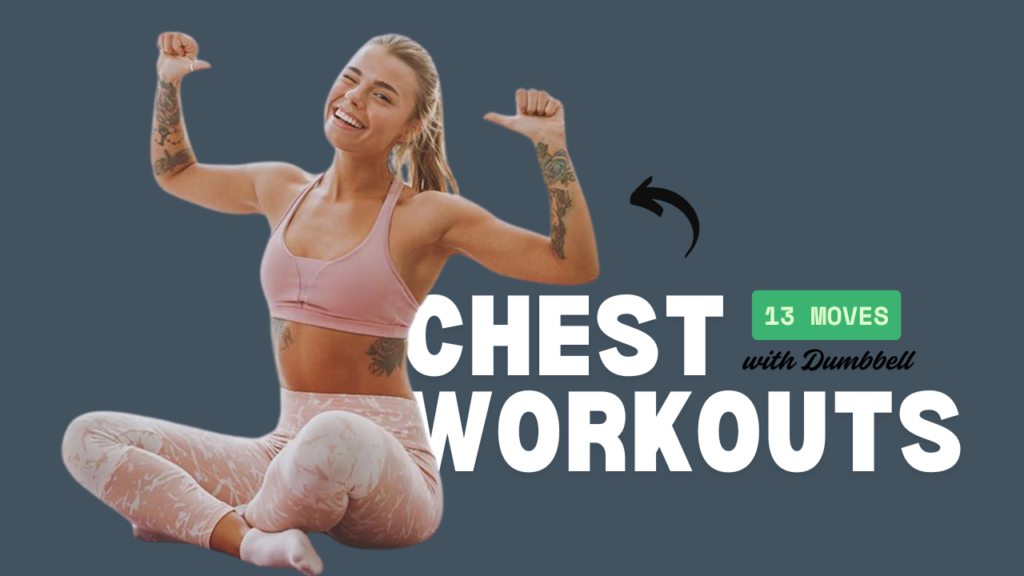
Table of Contents
What Happens After 30 Days of Dumbbell Chest Workouts?
| Changes You’ll Notice | Why It Happens |
|---|---|
| Increased Chest Size | Consistent resistance training boosts muscle hypertrophy (growth). |
| Improved Definition & Shape | Targeted exercises isolate and sculpt different areas of the chest. |
| Better Muscle Symmetry | Dumbbells train both sides equally, correcting imbalances. |
| Enhanced Strength & Push Power | Repeated pressing movements develop stronger pectorals and triceps. |
| Greater Mind-Muscle Connection | Focused training helps you feel and activate your chest better each rep. |
| Improved Posture | Strengthening chest and stabilizers supports upper body alignment. |
| Boosted Confidence in Appearance & Lifts | Visible changes and performance gains enhance motivation and self-esteem. |
| Sharper Control & Stability | Dumbbell use requires stabilizer engagement, improving balance and control. |
| Faster Recovery Time | Your body adapts to regular training with improved muscular endurance. |
| Better Joint Health (with proper form) | Dumbbells allow natural arm movement, reducing shoulder and elbow stress. |
Also Read: 15 Gym-Based Lower Back Exercises to Build Strength & Prevent Injury
Dumbbell Chest Workout: Do’s & Don’ts
| Do’s | Don’ts |
|---|---|
| Warm up your chest and shoulders before starting. | Don’t lift heavy without mastering proper form first. |
| Use a full range of motion for maximum muscle activation. | Don’t rush through reps—control is key. |
| Focus on mind-muscle connection to engage your chest properly. | Don’t let other muscles (like shoulders or triceps) take over the lift. |
| Keep your elbows at a 45° angle during presses to protect shoulders. | Don’t flare elbows too wide—it strains the shoulder joints. |
| Breathe rhythmically—exhale as you press or lift. | Don’t hold your breath—it limits oxygen and increases risk. |
| Choose weights you can control for 8–12 reps. | Don’t ego lift with weights that ruin your form. |
| ✅ Train the chest from multiple angles (flat, incline, decline). | Don’t stick to just one movement—it limits muscle development. |
| Incorporate rest days for muscle recovery and growth. | Don’t train chest back-to-back days without recovery. |
| Use slow, controlled movements during flys to avoid shoulder strain. | Don’t drop your arms too low during flys—it can cause injury. |
| Track your progress and gradually increase weight or reps. | Don’t do the same workout forever—progressive overload is essential. |
1. Flat Dumbbell Bench Press
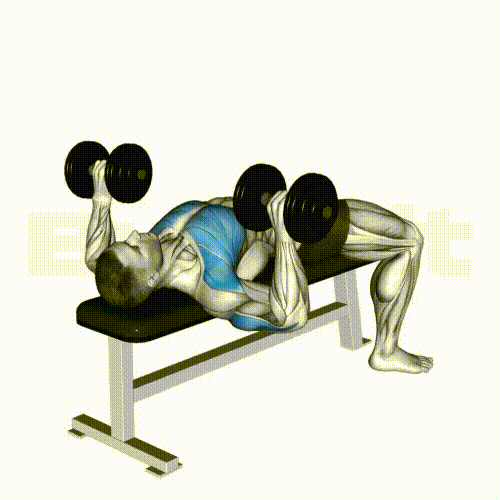
Target: Overall chest mass (especially the mid-pecs)
How to:
- Lie flat on a bench with dumbbells in each hand, palms facing forward.
- Press the dumbbells upward until the arms are fully extended.
- Lower slowly to chest level, elbows at about 45 degrees.
- Repeat for 8–12 reps.
Pro Tip: Go for a full range of motion—don’t cut your press short. That stretch builds serious size.
2. Incline Dumbbell Press

Target: Upper chest (clavicular head)
How to:
- Set the bench to a 30–45° incline.
- Press the dumbbells upward from shoulder height to above your chest.
- Lower slowly with control.
Why it works: Builds that “upper shelf” for a fuller, rounder chest.
Also Read: 13 Equipment-Based Calf Exercises to Power Up Your Lower Legs
3. Decline Dumbbell Press

Target: Lower chest (sternal head)
How to:
- Lie on a decline bench and hold dumbbells at chest level.
- Press them straight up and bring them down with control.
Bonus Benefit: Also hits your triceps hard—a win-win for pushing strength.
4. Dumbbell Chest Fly (Flat)
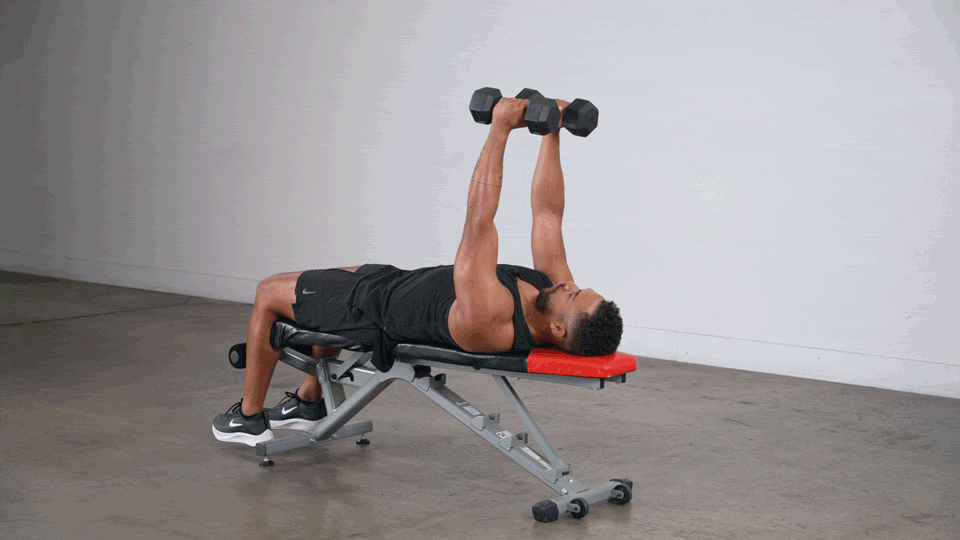
Target: Inner chest and definition
How to:
- Lie flat and start with dumbbells above your chest, palms facing each other.
- Slowly arc the weights outward (as if hugging a tree), keeping a slight bend in elbows.
- Bring them back up and squeeze the chest.
Myth Buster: Many think flys build size—they’re actually for shape and definition, not bulk.
5. Incline Dumbbell Fly
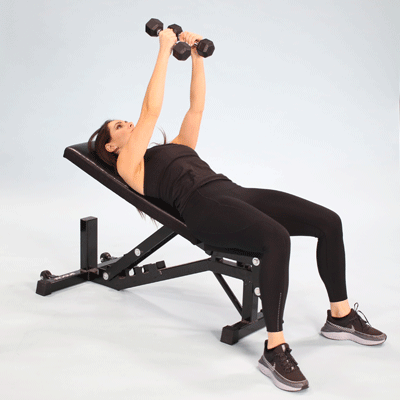
Target: Upper inner chest
How to:
- Set the bench to a slight incline.
- Perform the fly motion as above.
Why you need it: Helps lift and separate the pecs for that sculpted look.
Also Read: 13 Adductor Exercises You Can Do With Gym Equipment for Stronger Inner Thighs
6. Dumbbell Pullover
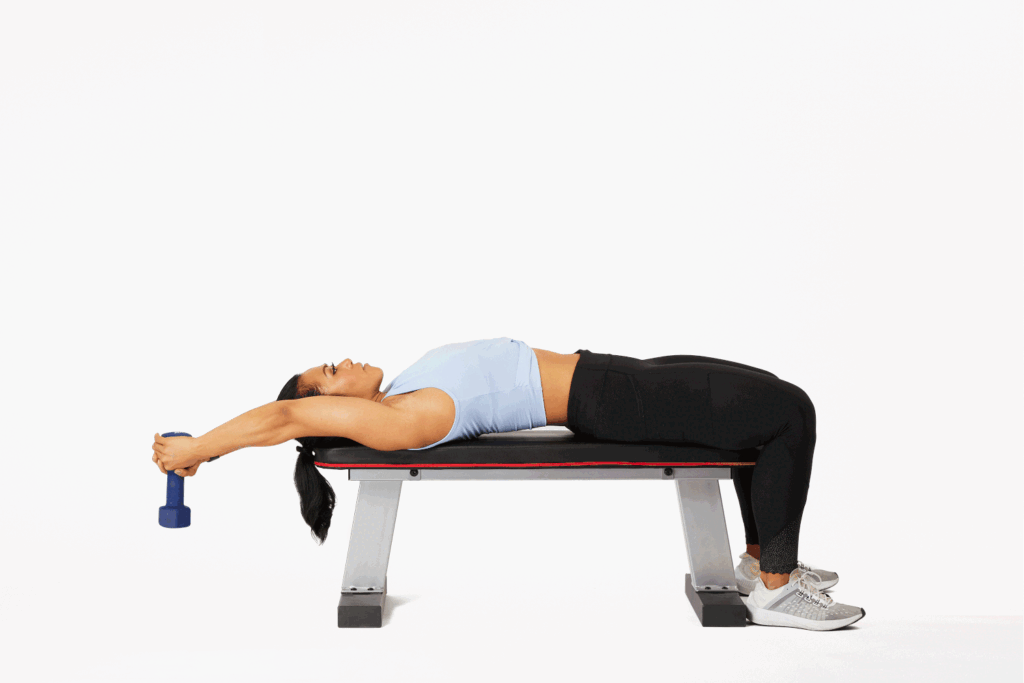
Target: Chest and lats
How to:
- Lie flat holding one dumbbell with both hands above your chest.
- Lower it slowly behind your head until you feel a deep stretch.
- Pull it back to the start position.
Fact: A favorite of Arnold Schwarzenegger. It expands the rib cage and builds thickness in the chest.
7. Single-Arm Dumbbell Press
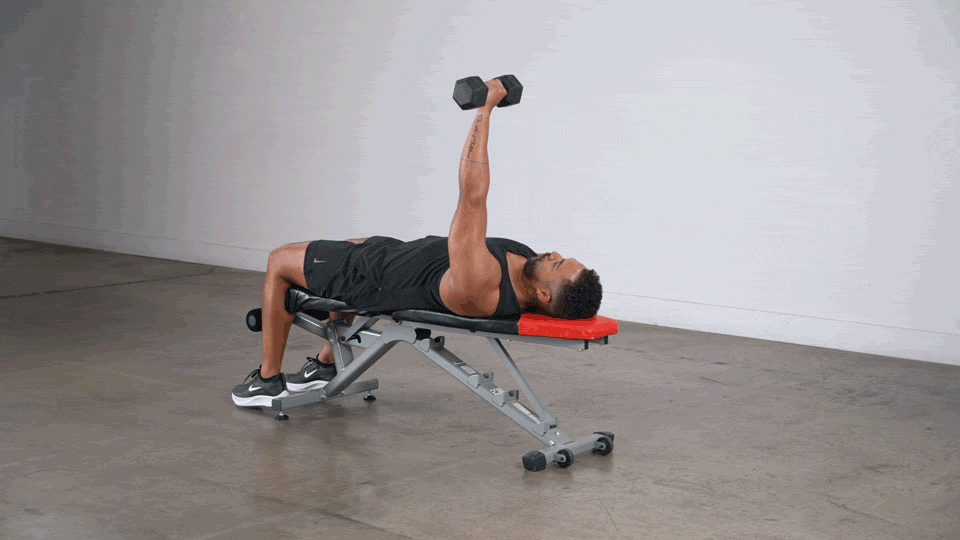
Target: Chest, core, and shoulder stabilization
How to:
- Lie flat and press one dumbbell at a time, keeping the other arm extended or resting.
- Alternate arms every rep or every set.
Why it works: Forces each side to work independently—say goodbye to imbalances.
8. Neutral-Grip Dumbbell Press
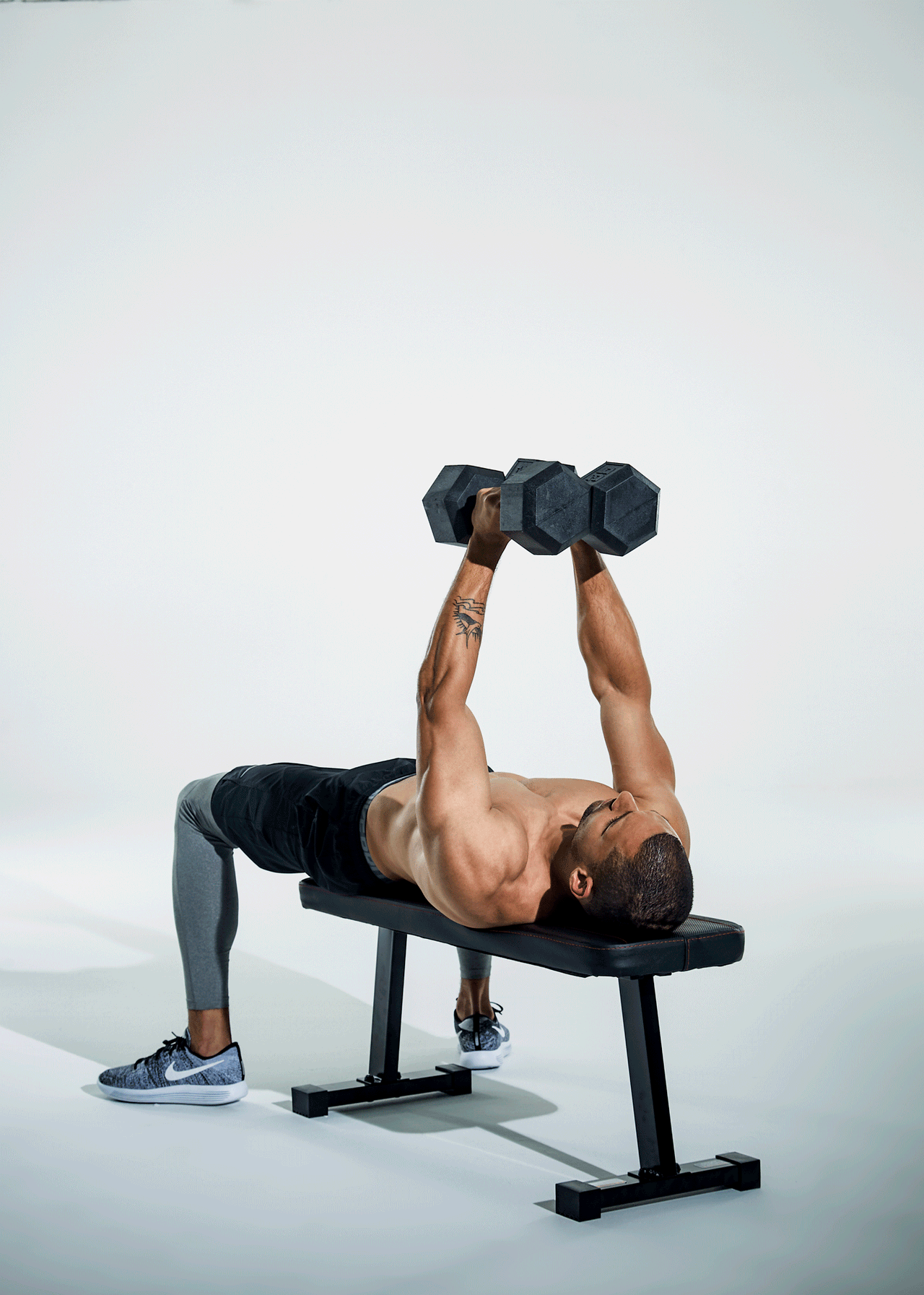
Target: Inner chest and triceps
How to:
- Hold dumbbells close together with palms facing in.
- Press straight up, keeping the weights close throughout.
Bonus: This variation is shoulder-friendly and great for lifters with joint issues.
9. Dumbbell Squeeze Press
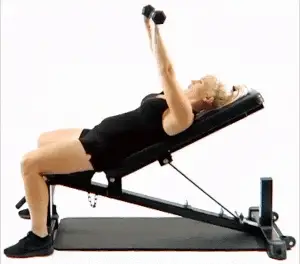
Target: Inner chest and mind-muscle connection
How to:
- Lie flat and press the dumbbells together (touching) throughout the movement.
- Focus on squeezing your pecs on the way up and down.
Interesting Fact: In EMG studies, this move triggers some of the highest chest activation of all dumbbell presses.
Also Read: 10 Forearm Exercises Using Gym Gear That Build Iron Grip & Bigger Arms
10. Dumbbell Floor Press

Target: Mid to lower chest and lockout strength
How to:
- Lie on the floor, dumbbells in hand.
- Press them up from elbows resting on the ground.
- Pause briefly at the bottom of each rep.
Why it’s powerful: Reduces shoulder strain and increases explosive power.
11. Reverse-Grip Dumbbell Press

Target: Upper chest with elbow-sparing grip
How to:
- Hold dumbbells with palms facing your face.
- Press upward while keeping elbows close to your body.
Unique Edge: Studies show reverse-grip pressing hits the upper pecs more effectively than traditional angles.
12. Standing Dumbbell Chest Fly (Crossover)
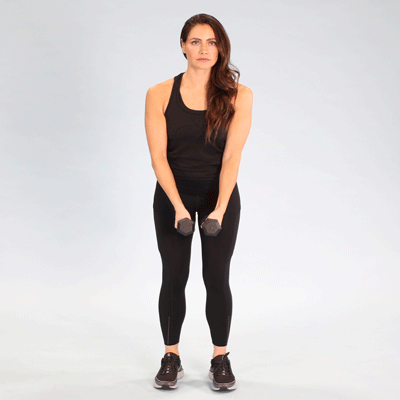
Target: Chest definition and shape
How to:
- Stand upright and hold dumbbells at your sides.
- With a slight bend in elbows, lift both arms across your body in a hugging motion.
- Slowly return to the start.
Why do it: Mimics cable crossovers without the machine. Great for finishing sets.
Also Read: 10 Must-Try Trapezius Exercises Using Gym Equipment You’re Underusing
13. Isometric Dumbbell Hold (Chest Squeeze)
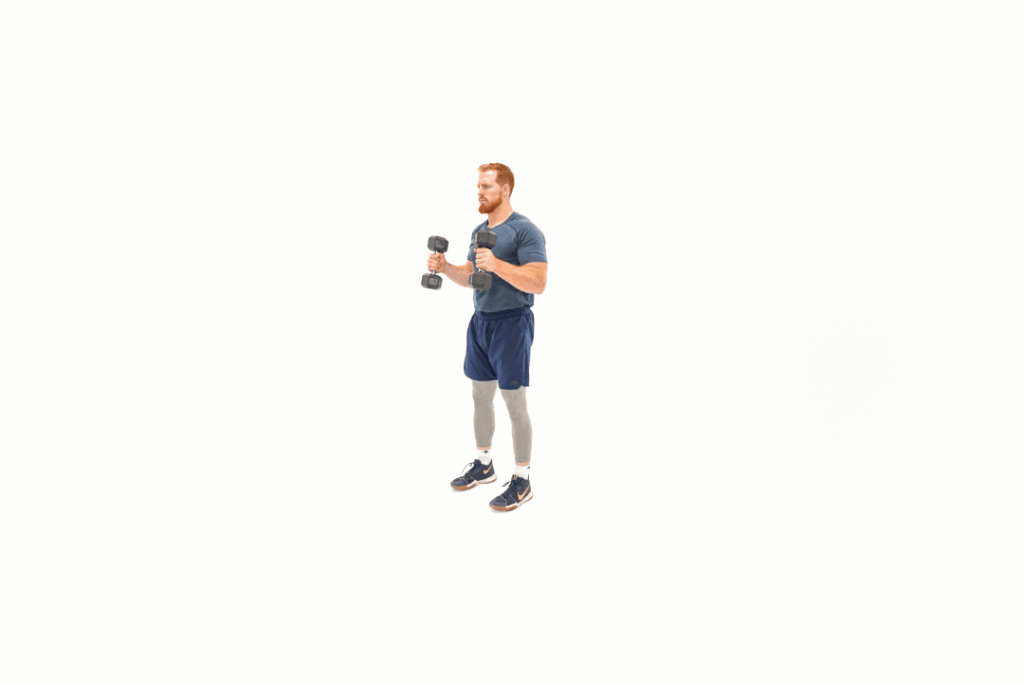
Target: Chest contraction and endurance
How to:
- Hold two dumbbells together (as in a squeeze press).
- Keep the press halfway up and hold for 15–30 seconds while squeezing your pecs.
Use this: As a burnout finisher to ignite new growth.
Final Thoughts: How to Use These Workouts for Maximum Gains
Mix and match 3–5 of these exercises for your next dumbbell chest day.
Keep reps in the 8–15 range for hypertrophy, and aim for progressive overload weekly. Don’t forget proper rest and nutrition—your chest grows outside the gym, not in it.
Remember: Dumbbells aren’t just alternatives to barbells—they’re a superior tool for building a balanced, chiseled chest when used correctly.
Frequently Asked Questions (FAQs)
Can I build a bigger chest using only dumbbells?
Absolutely. Dumbbells allow for a greater range of motion, activate stabilizing muscles, and help fix muscle imbalances—making them incredibly effective for both building size and sculpting definition in the chest.
How many times a week should I train my chest with dumbbells?
For optimal results, train your chest 1–2 times per week. Make sure to allow at least 48 hours of rest between sessions to give your muscles time to recover and grow.
Do I need a bench to do these dumbbell chest exercises?
While a bench is ideal for certain movements (like incline/decline presses), many exercises like the floor press, standing flys, and isometric holds can be done without one. A flat surface or stability ball can also work as alternatives.
What dumbbell weight should I use for chest workouts?
Start with a weight that challenges you but allows you to maintain proper form for 8–12 reps. As you get stronger, increase the weight gradually to continue building size and strength.
Are dumbbell chest workouts safe for shoulders?
Yes—dumbbells are actually shoulder-friendly because they allow your arms to move more naturally compared to a fixed barbell. However, it’s still crucial to warm up, use proper form, and avoid flaring elbows too wide.
How long does it take to see results from dumbbell chest training?
Visible results typically show in 4–8 weeks with consistent training, proper nutrition, and progressive overload. Definition and strength improvements may be noticeable even sooner.
Can beginners do these dumbbell chest exercises?
Definitely. Many of these movements are beginner-friendly. Start with lighter weights and fewer sets, focusing on slow, controlled reps. As your strength improves, you can progress to more advanced variations.
Should I do all 13 exercises in one workout?
No. Choose 3–5 exercises per session, ideally including a press, a fly, and one variation targeting different angles (flat, incline, or decline) to fully engage your chest.
Are dumbbell chest workouts effective without heavy weights?
Yes! Even moderate weights with proper form, full range of motion, and time under tension can stimulate growth and increase definition. Focus on contraction and control over just lifting heavy.
Can I do dumbbell chest workouts at home?
Absolutely. That’s one of the biggest advantages. As long as you have a pair of dumbbells (adjustable or fixed), you can get an effective chest workout at home—with or without a bench.








